
Treating Stem and Root Rots in Betel Vines
A study on the isolation of Phytophthora capsici and the efficacy of biocontrol agents in managing stem and root rot diseases in betel vine cultivation.
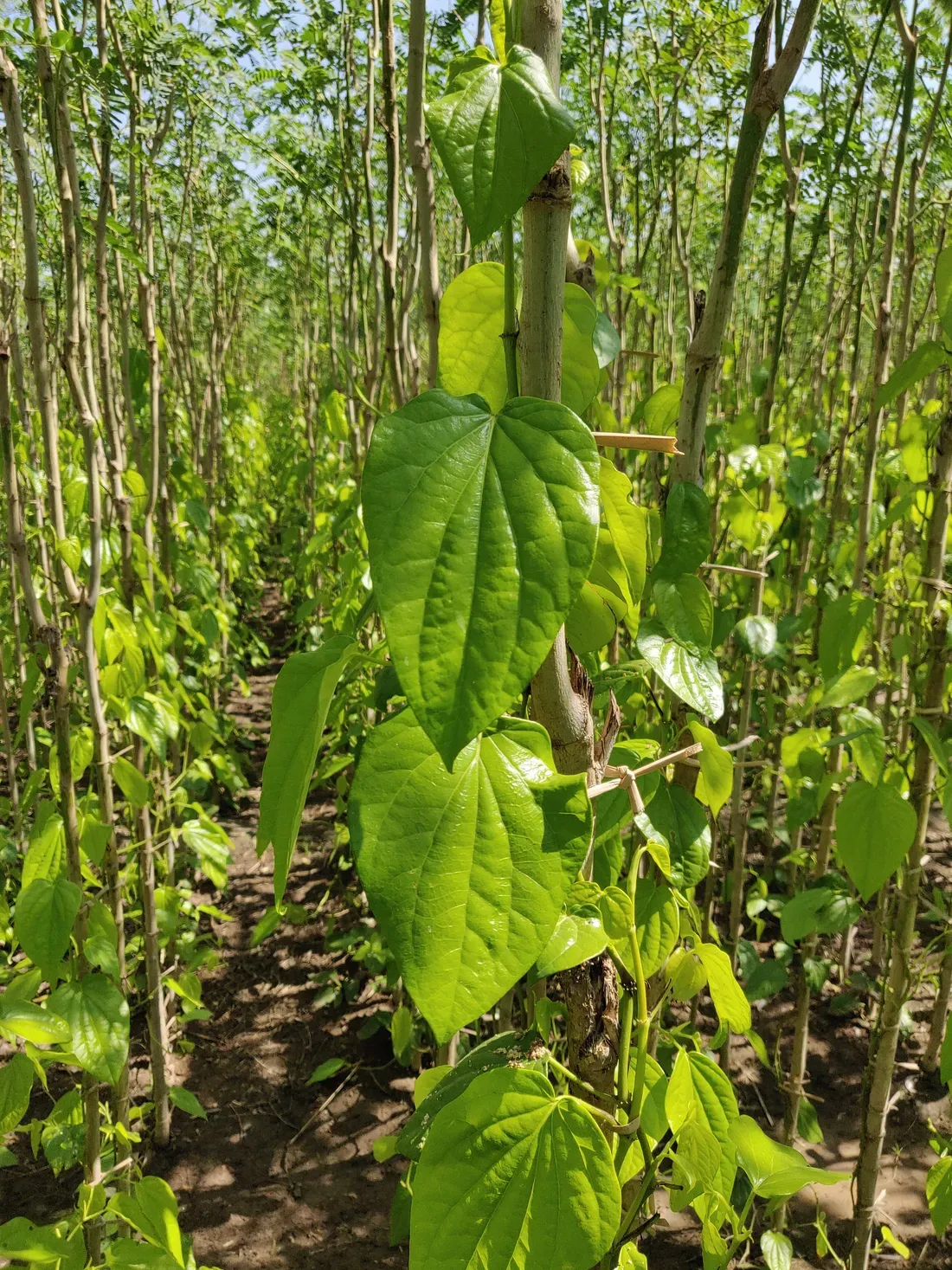
Overview
In Chennur, Andhra Pradesh, betel vine farming has been a significant tradition, known for producing large, sweet leaves cherished across India. However, for over a decade, farmers have faced recurring challenges with stem and root rot diseases that threaten their livelihoods. Our research at Torus Biosciences aimed to identify the cause and find a sustainable solution.
The Problem
Betel vines need humid conditions to grow, often supported by trees like Sesbania and maintained with continuous watering. Unfortunately, these conditions are also ideal for the growth of harmful fungi, especially during the winter. The main culprit we found was Phytophthora capsici, a fungus that infects the roots and stems, cutting off nutrients and causing the plants to droop and die—often overnight.

Healthy Betelvine
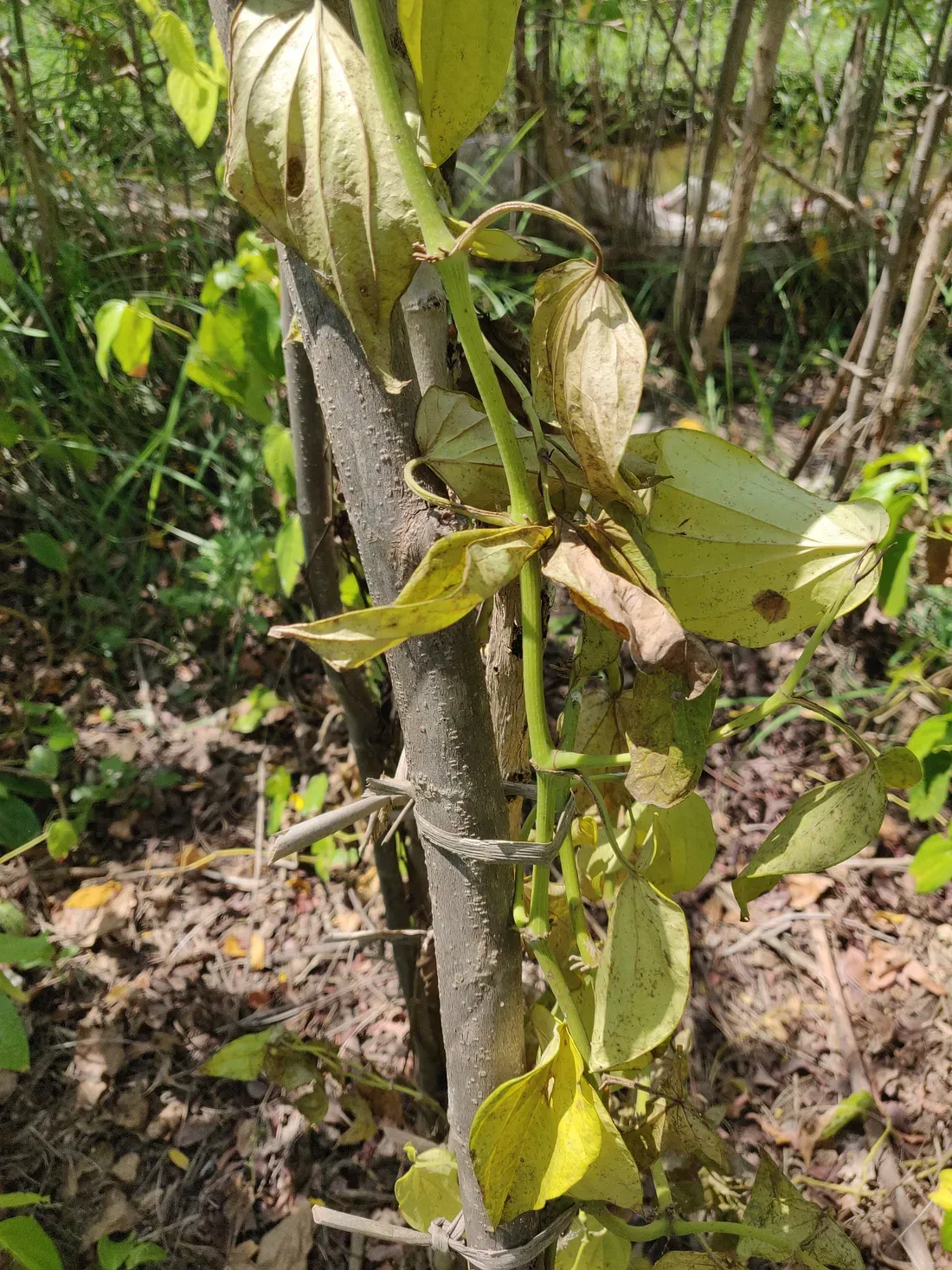
Affected Betelvine
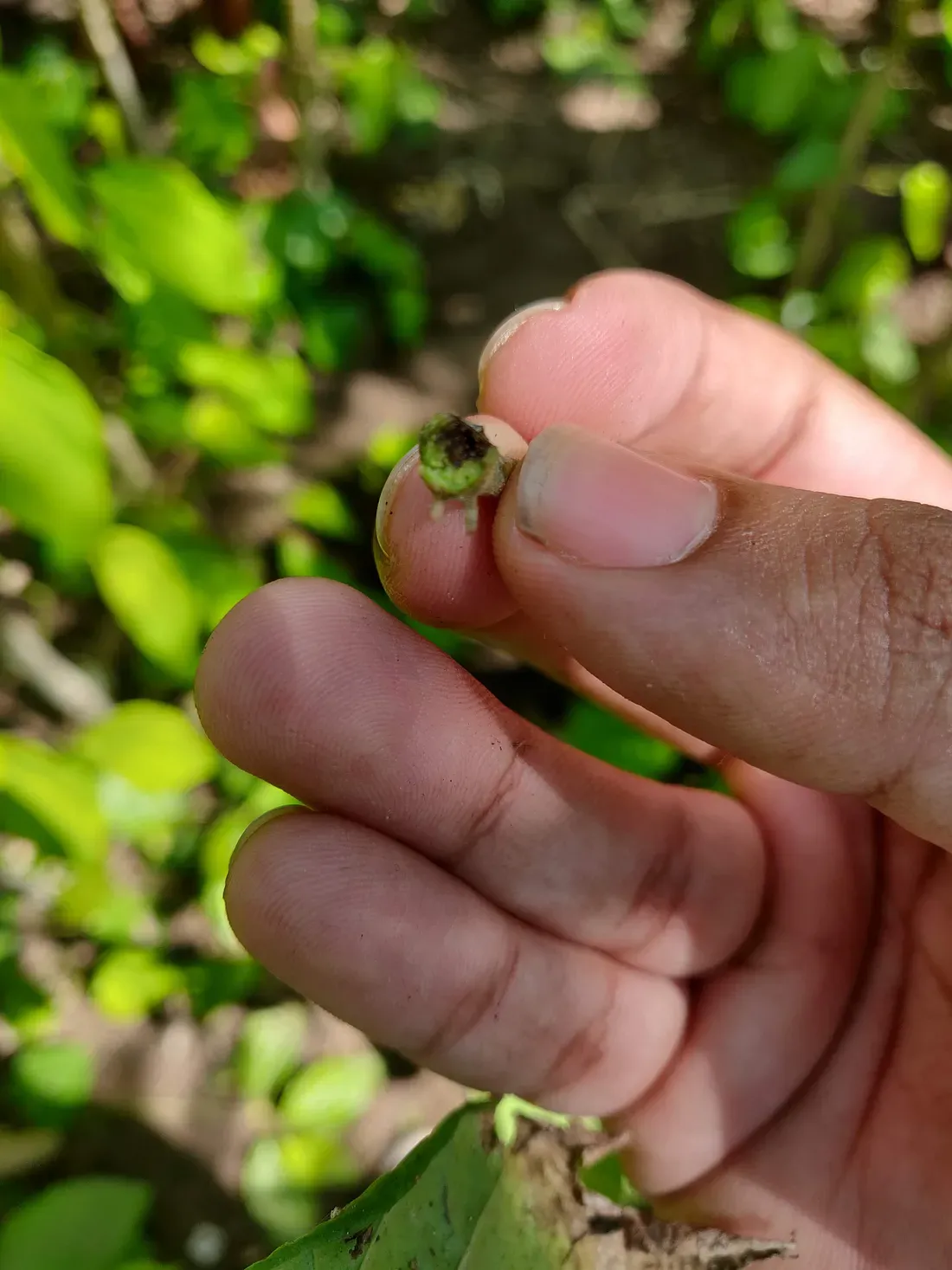
Affected Stem
Our Research Approach
Sample Analysis
We collected samples from infected betel vines in Chennur and brought them to our lab in Hoskote, Karnataka. Under controlled conditions, we cultured these samples on nutrient-rich media to observe fungal growth. After two weeks, we confirmed the pathogen as Phytophthora capsici.
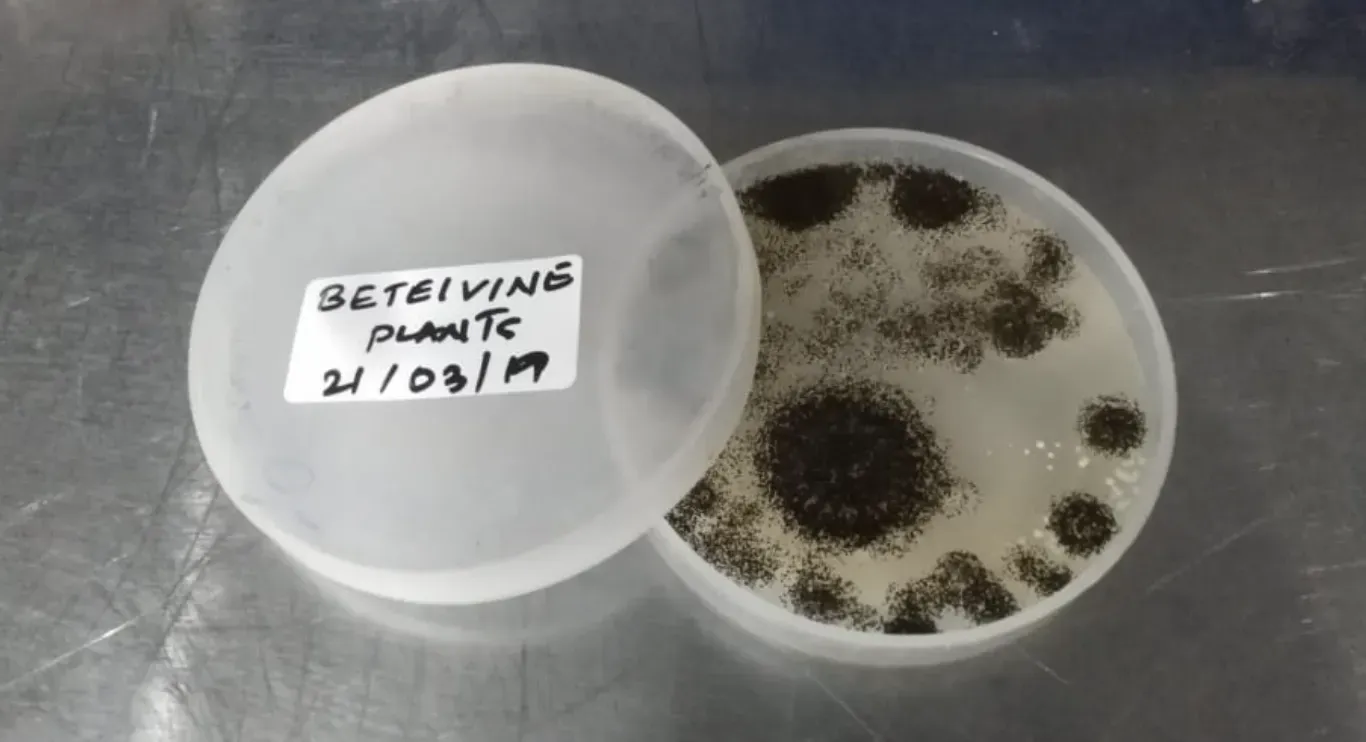
Cultured Sample (Phytophthora)
Testing Biocontrol Solutions
To combat this fungus, we tested natural biocontrol agents known for their antifungal properties:
- Trichoderma viride
- Trichoderma harzianum
- Pseudomonas fluorescens
These agents were cultured alongside the pathogen to observe their effectiveness in inhibiting its growth.

Start Day
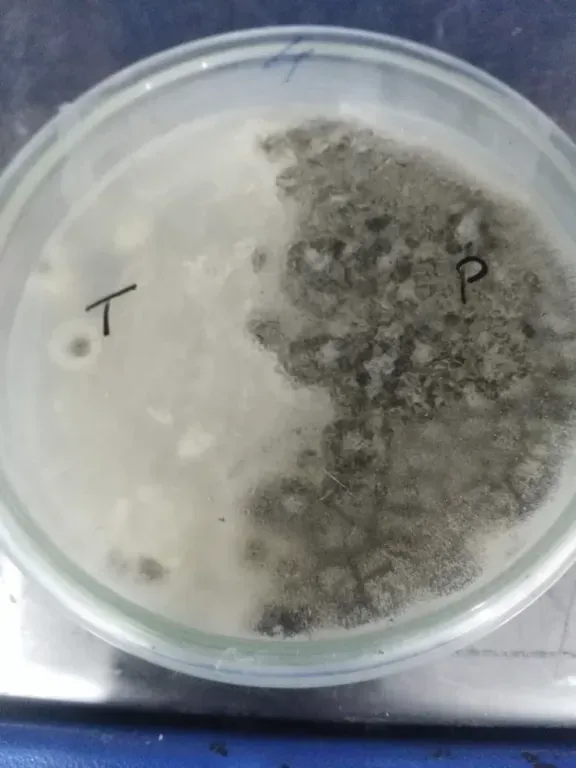
Day 10
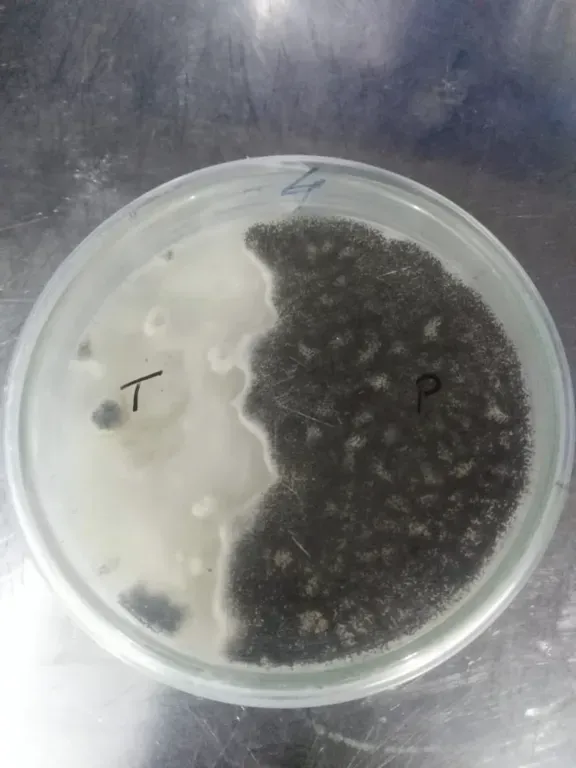
Day 15
Trichoderma viride vs Phytophthora
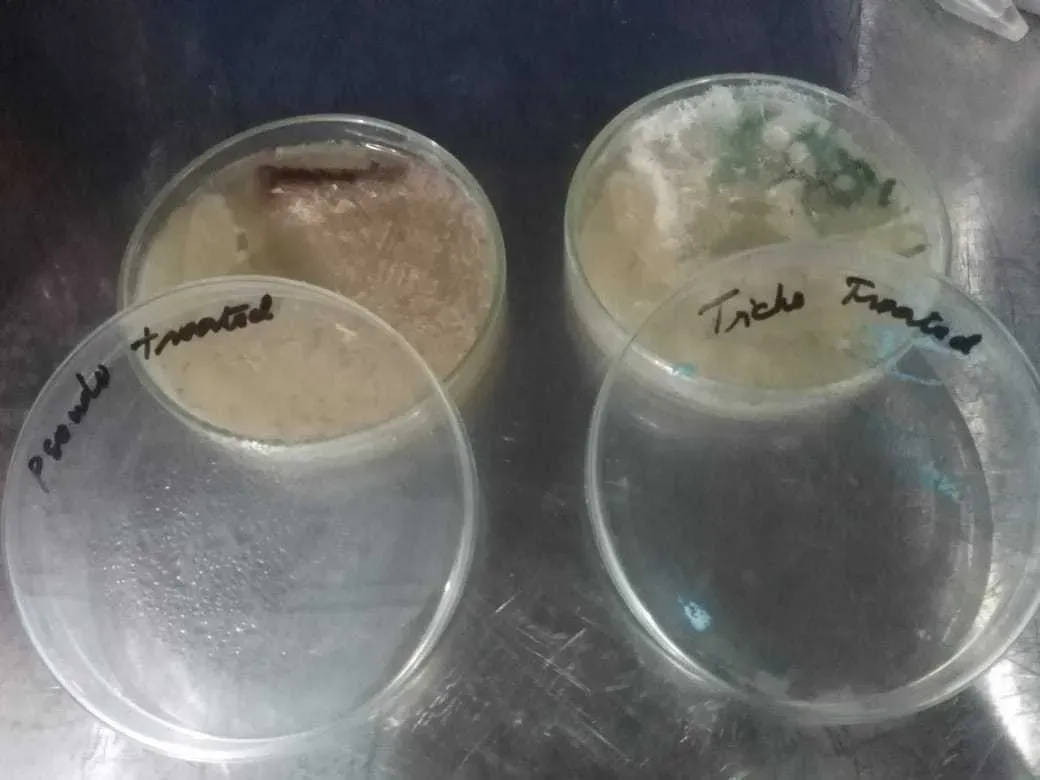
(Left) Pseudomonas fluoroscens vs Phytophthora capsici
(Right) Trichoderma harzianum vs Phytophthora
Key Findings
- Effective Inhibition: Trichoderma viride and Trichoderma harzianum showed significant suppression of Phytophthora capsici, as did Pseudomonas fluorescens. By the 13th day, these biocontrol agents had visibly limited the fungus’s spread.
- Field Application: We recommended a combination of these agents, complemented with biofertilizers, to enhance soil health and support plant growth.
Suggested Treatment Plan
Our plan involved applying 1 liter per acre of the following biofertilizer and biocontrol products:
- Jeevodharini Growth: Contains beneficial microbes like Azospirillum brasilense and Bacillus megaterium.
- Jeevodharini Immuno: Formulated with Pseudomonas fluorescens and Bacillus subtilis.
- Jeevodharini Root Protect: Features Trichoderma viride and Bacillus amyloliquefaciens.
Results and Impact
After applying these treatments, farmers observed significant improvements within a month:
- Rot Prevention: No signs of rot, even in winter.
- Improved Growth: Faster growth and reduced harvest cycles from 30 days to 15 days, effectively doubling the yield.
- Better Leaf Quality: Larger, greener leaves with a higher percentage of large-sized leaves.
- Reduced Chemical Dependence: The need for chemical fertilizers and pesticides was eliminated, leading to a more sustainable approach.
Conclusion
Our study shows that using biocontrol agents can effectively manage stem and root rot in betel vines. This natural approach not only protects the crops but also supports sustainable farming practices, giving farmers like those in Chennur a renewed sense of hope and improved economic outcomes.
This is what the farmer had to say::
For more insights or collaboration opportunities, feel free to reach out to us at Torus Biosciences.
Written by Arun kumar Gandlur on